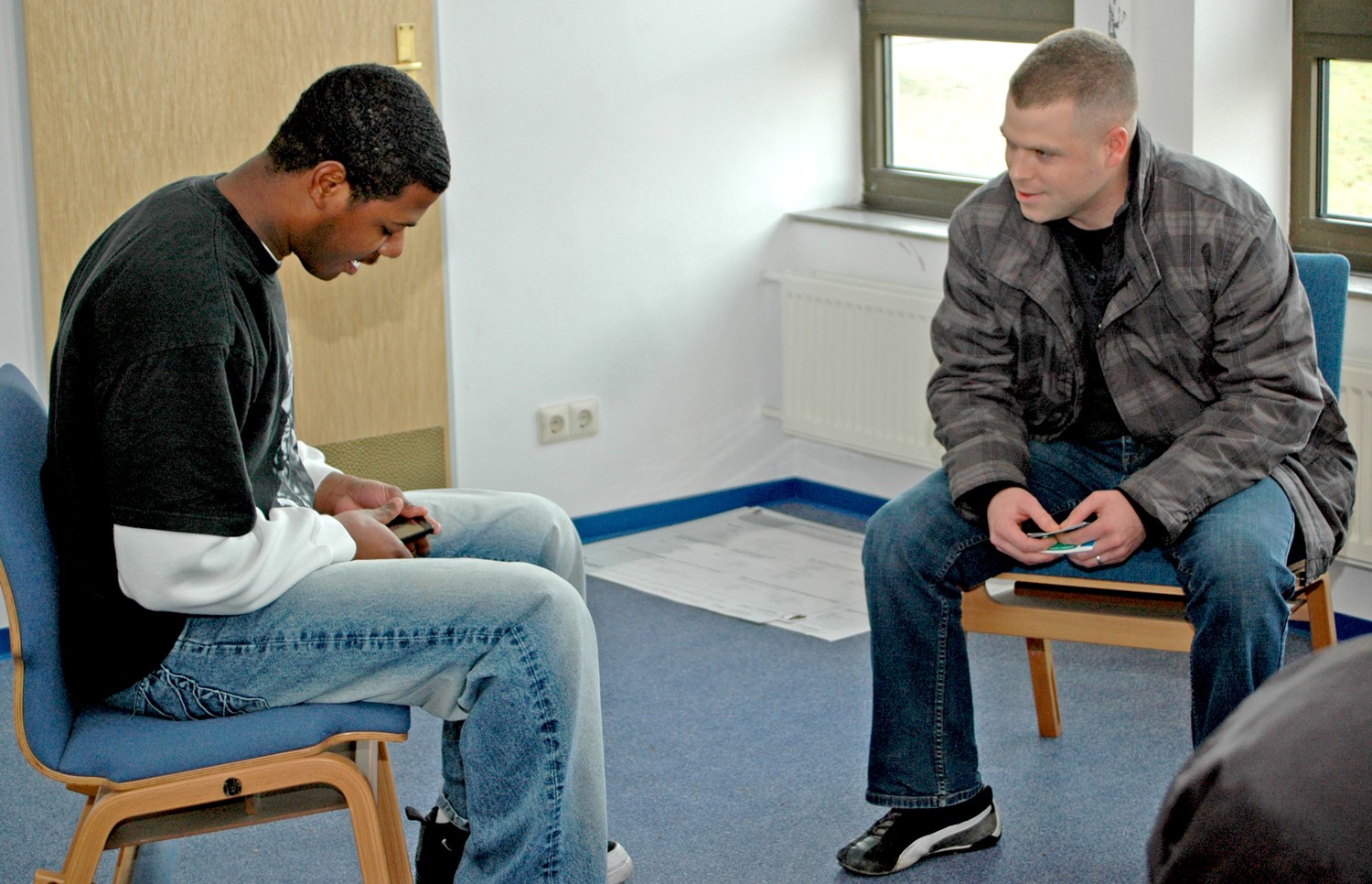WIESBADEN, Germany - One suicide intervention program compares suicidal thoughts to a strong river current that can sweep people into dangerous drop-offs.
That same program is training Army Soldiers how to wade into those murky waters and help save lives.
Fifty 1st Armored Division noncommissioned officers took part in a two-day course on the Applied Suicide Intervention Skills Training program Nov. 17-18.
On the first day Sgt. Michael Lee, 1st AD family life NCO, alluded to the strong undercurrent of suicidal thoughts that can seep into a community.
Hidden by calm waters, suicidal thoughts exist even in the best of communities, said Lee.
The roomful of NCOs confronted that realization as an anonymous survey at the beginning of class revealed that at least two NCOs present admitted to having suicidal thoughts within the last week.
"Once you've had thoughts of suicide, you're now in the river," said Lee.
ASIST is part of the Army's suicide prevention campaign. But it goes a step further, said 1st AD Family Life Chaplain (Maj.) Darin Nielsen.
"Prevention (training) is about what signs to look for and getting people to help," said Nielsen. "ASIST is about training Soldiers to engage at a significant level prior to getting a person at risk to professional help."
The ASIST course incorporated workbook activities and role play scenarios. The model focuses on communicating with a person who displays the behavior associated with suicidal thoughts.
And this means talking openly about death, an aspect that Nielsen said is usually the most difficult part in the training.
"Death is something we don't like to talk about," said Nielsen.
But training Soldiers to be comfortable in talking to an at-risk person about reasons for dying and reasons for living is an important step in the ASIST model.
"If you rush people, they shut down. You have to get people through the process and help them realize where they can get help" said Nielsen.
The ASIST program has three phases for talking with an at-risk person - connecting, understanding and assisting.
"It doesn't matter (where in the process) you start, just know where you're going," said Lee.
The Army first began using the ASIST program model after the start of Operation Desert Storm in the early 1990s. Created by Living Works Education Inc., the model was originally intended for troops who processed and transported casualties.
In 2002 the program went Army-wide with ASIST workshops and interactive CDs provided to installation chaplains to reinforce the training at unit levels.
With 140 confirmed suicides in 2008 for the U.S. Army, suicide has been acknowledged by Army leaders as a problem.
With 1st AD preparing for its deployment in early 2010, Nielsen said the recent ASIST program training provides the division with 50 more trained gatekeepers - Soldiers who are confident and competent to intervene if they see someone at-risk for suicide.
"We're not trying to turn them into mental health workers, but by training one Soldier in every section, it's like creating a lookout," said Nielsen.
"It's the average Soldier who is much more aware of how those on their left and right are doing," said Nielsen referring to those most likely to first recognize the signs of suicidal thoughts.
The ASIST course for 1st AD was offered to Soldiers ranked sergeant to sergeant first class.
The goal of ASIST is to train gatekeepers to be comfortable and confident in talking to an at-risk Soldier.
In role play scenarios, the Soldiers practiced how to approach an at-risk person with open dialogue about death and a safe plan with links to resources for help.
The repetitive training is intended to give the gatekeepers a higher confidence in approaching the subject of suicide.
"I hope that they feel as comfortable as possible in recognizing the signs of suicide and using the intervention model and taking comfort in it - not just knowing it, but being able to effectively use it," said Nielsen.




Social Sharing